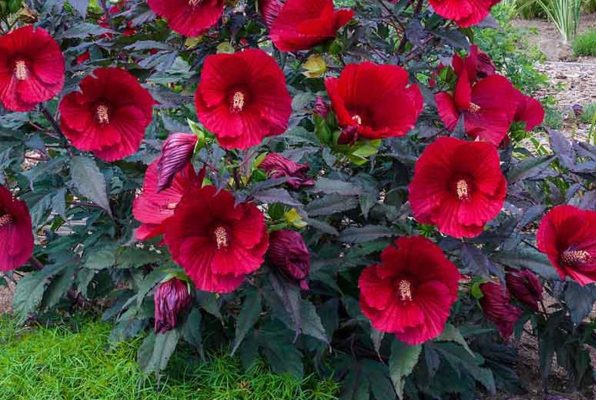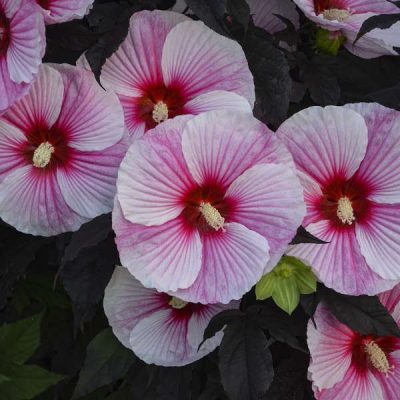
Year-Round Blooms: Caring for Hibiscus in All Seasons
Red, yellow, peach, white, and orange – a Hibiscus bush is easily recognizable from a distance due to its distinctive colors, charm, and fragrance. Renowned for their vibrant and colorful flowers, these tropical plants are widely sought after for their ornamental value, capable of enhancing the beauty of any garden or indoor living space.
Hibiscus, with its vibrant and showy blooms, is a favorite among gardeners for adding a touch of tropical beauty to any landscape. While often associated with warm, sunny weather, hibiscus plants can thrive and bloom throughout the year with proper care. In this blog post, we’ll explore the secrets to achieving year-round blooms from your hibiscus plants, ensuring a constant burst of color and beauty in your garden.
Year-Round Blooms: Caring for Hibiscus in All Seasons
Choosing the Right Variety
Selecting the right hibiscus variety is crucial for year-round blooms. While many varieties are suitable for various climates, some are more resilient to changing seasons. For consistent flowering, consider tropical or perennial hibiscus varieties that are well-suited to your specific region.

Also Read This : Unveiling the Secrets to Fix Hibiscus Bud Drop: A Blooming Guide
Sunlight Requirements
Hibiscus plants are sun lovers, and providing them with adequate sunlight is essential for continuous blooming. Ensure your hibiscus receives at least 6-8 hours of sunlight daily. During the winter months, when sunlight is less intense, placing your hibiscus near a south-facing window can help maintain optimal light conditions.

Also Read This : Hibiscus Happiness: 10 Stunning Varieties for a Colorful Garden
Proper Watering Routine
Consistent and appropriate watering is vital for hibiscus plants. During the growing season, water the plants regularly, keeping the soil consistently moist but not waterlogged. In winter, reduce the frequency of watering to prevent root rot. Always water at the base of the plant to keep the foliage dry and prevent diseases.

Also Read This : Harvesting Hibiscus: Tips for Blooming Success
Fertilization Schedule
Hibiscus plants are heavy feeders, and regular fertilization is key to promoting continuous blooming. Use a balanced fertilizer with a higher potassium content to encourage flower production. During the growing season, feed your hibiscus every 2-4 weeks. In winter, reduce fertilization to once a month or as needed based on the plant’s growth.

Also Read This : Hibiscus Flower: How to Grow Cutting and Seeds
Pruning and Deadheading
Pruning is essential for shaping the plant and encouraging new growth. Regularly remove dead or spent flowers (deadheading) to stimulate the production of new buds. Prune the hibiscus in late winter or early spring to remove any dead or diseased wood and promote a more compact growth habit.

Also Read This : What are the Best Ways to Revive a Dying Hibiscus?
Protection from Harsh Conditions
Extreme weather conditions can impact hibiscus blooming. In colder climates, consider planting hibiscus in containers that can be brought indoors during frosty nights. Applying a layer of mulch around the base of the plant helps retain moisture and insulate the roots during colder months.

Also Read This : Rooted Revelations: Unveiling the Significance of Reporting on Plant Roots in Potted Plants
Pest and Disease Management
Keep a watchful eye for pests such as aphids and spider mites, which can affect hibiscus plants. Treat any infestations promptly with insecticidal soap or neem oil. Regularly inspect your plants for signs of diseases like leaf spot or powdery mildew and take appropriate measures to prevent their spread.

Also Read This : Enigmatic Allure: Unraveling the Fame of the Lotus Flower
How Often to Water Hibiscus in Winter?
Watering is crucial for Hibiscus plants throughout the year, but during winter, the frequency of your watering schedule should decrease. The winter environment tends to be drier, leading to lower rates of evaporation and transpiration. Consequently, the plant absorbs and loses water at a slower rate than it is accustomed to. Only water your plant when the topsoil feels dry to the touch. Use your forefingers to check the top layer of soil where your Hibiscus is planted, and if it is dry, it’s time to water. It’s important to note that overwatering your Hibiscus plant, especially in winter, can lead to drowning roots, a condition particularly common during this season.
Also Read This : Best Place at Home to Put a Jade Plant, as per Vastu
With the right care and attention, hibiscus plants can reward you with beautiful blooms throughout the entire year. Whether you’re a seasoned gardener or a beginner, incorporating these tips into your hibiscus care routine will help you enjoy the spectacular flowers of this tropical plant in every season. Embrace the joy of year-round hibiscus blooms and elevate the beauty of your garden!




